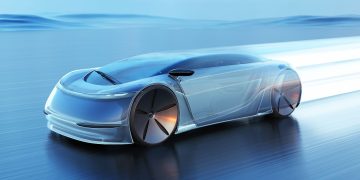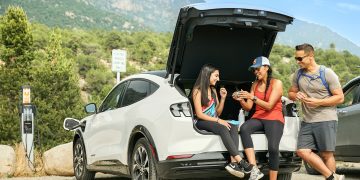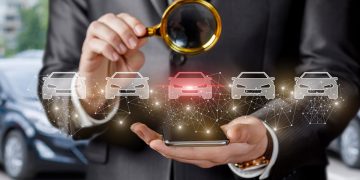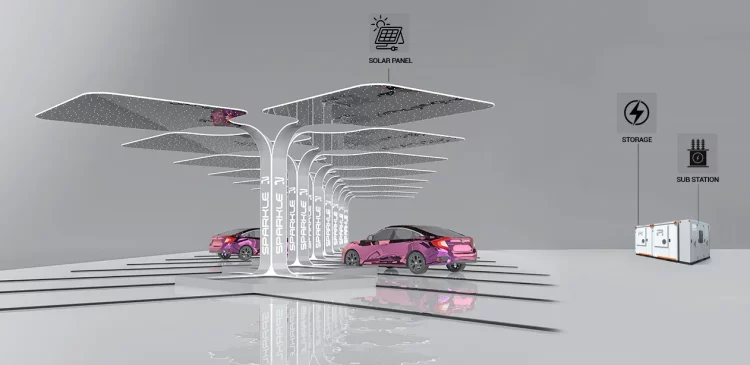Introduction: The Changing Landscape of Automotive Employment
The automotive industry is undergoing a profound transformation driven by the rise of electric vehicles (EVs). As the global shift towards sustainability accelerates, traditional internal combustion engine (ICE) vehicles are gradually being replaced by cleaner, greener electric models. This transition is reshaping many aspects of the industry, from production processes to supply chain logistics. One of the most significant changes is the impact on the automotive workforce, as the adoption of EVs presents both challenges and opportunities for job creation, job displacement, and workforce adaptation.
The question arises: How are EVs impacting the jobs market in the automotive industry? In this article, we will explore the positive and negative effects of this transition on workers, how new jobs are being created in EV-specific sectors, and how traditional roles are being affected. The shift to electric vehicles not only changes the technical landscape but also reshapes the skills required, offering both challenges and opportunities for the workforce.
Job Creation in the EV Sector: The Rise of New Roles
The transition to electric vehicles is creating a wealth of new job opportunities in various sectors of the automotive industry. From research and development to production and after-sales services, new roles are emerging as automakers focus on EV production, battery technology, and charging infrastructure.
1. Electric Vehicle Manufacturing
As automakers increasingly commit to producing electric vehicles, there has been a significant increase in demand for skilled labor in EV manufacturing. The production of electric vehicles requires specialized knowledge of electric drivetrains, battery technology, and electronic control systems. Consequently, companies are hiring engineers, technicians, and assembly line workers with expertise in these areas.
In particular, the production of EV batteries, a critical component of electric vehicles, has led to the establishment of new manufacturing plants and facilities. Companies like Tesla, GM, and Ford have invested billions of dollars in EV battery manufacturing, creating thousands of new jobs. For instance, Tesla’s Gigafactories are a prime example of large-scale battery production facilities that are creating thousands of skilled jobs in areas like battery assembly, quality control, and manufacturing management.
2. Battery Technology and Research & Development (R&D)
The development of more efficient and affordable batteries is central to the success of electric vehicles. As a result, there has been a surge in demand for R&D professionals in battery technology. Chemists, materials scientists, electrical engineers, and physicists are being recruited to design next-generation lithium-ion batteries, solid-state batteries, and other energy storage technologies that can power EVs.
Job creation in R&D is not limited to vehicle manufacturers; the rise of startups and tech companies focused on battery innovation is also contributing to job growth. Research labs and universities are also crucial players in developing new technologies that can improve battery efficiency, reduce costs, and extend vehicle range.
3. Charging Infrastructure Development
The widespread adoption of electric vehicles requires a robust charging infrastructure. As more consumers choose EVs, there is a growing need for public and private charging stations. The expansion of this infrastructure is creating jobs in areas like installation, maintenance, and operations management.
Electric utilities and private sector companies are investing heavily in charging networks, creating roles in site selection, electrical installations, and customer support. As charging stations become more widespread, new roles such as charging station technicians, infrastructure planners, and service providers will continue to emerge.
Job Displacement: The Decline of Traditional Roles
While the rise of electric vehicles creates new jobs, it also leads to the displacement of traditional roles that have been tied to the production and maintenance of internal combustion engine (ICE) vehicles. The automotive industry has relied on ICE technology for over a century, and as the industry shifts to electric powertrains, certain roles are at risk of disappearing or evolving into different functions.
1. Engine and Transmission Manufacturing Jobs
Internal combustion engines (ICEs) have been a cornerstone of the automotive industry for generations. However, the adoption of electric vehicles eliminates the need for traditional engines and transmissions. As a result, a significant number of jobs related to engine manufacturing, assembly, and testing are being displaced.
Automakers are increasingly investing in electric drivetrains and battery production, which require different manufacturing processes. For example, the production of EVs focuses more on electric motors, inverters, and battery management systems, rather than complex engines and exhaust systems. This shift is leading to job displacement in traditional engine factories, particularly in regions where manufacturing is centered around ICE vehicle production.
2. Aftermarket and Repair Services for ICE Vehicles
Another sector facing disruption is the aftermarket and repair industry, which has long relied on internal combustion engine vehicles. As electric vehicles become more prevalent, the demand for repair services focused on ICE components like engines, exhaust systems, and fuel systems will decline. EVs, by contrast, have fewer moving parts and require less frequent maintenance.
The transition to electric vehicles will reduce the need for mechanics with expertise in traditional ICE systems. While there will still be a need for service technicians for EV maintenance, such as battery servicing and software updates, many automotive repair shops may need to adapt their business models and retrain staff to stay competitive.
3. Fuel Supply and Distribution Jobs
The rise of electric vehicles also impacts industries related to fuel production and distribution. Gas stations, which have long been a staple of the automotive supply chain, face diminishing demand for gasoline and diesel as electric vehicles become more common. This shift may lead to a decline in jobs associated with fuel retail, including gas station attendants, fuel truck drivers, and refinery workers.
While the growth of EV charging stations is offsetting some of these job losses, the overall trend in fuel supply and distribution is toward a reduction in workforce demand as fewer people rely on petroleum-based vehicles.
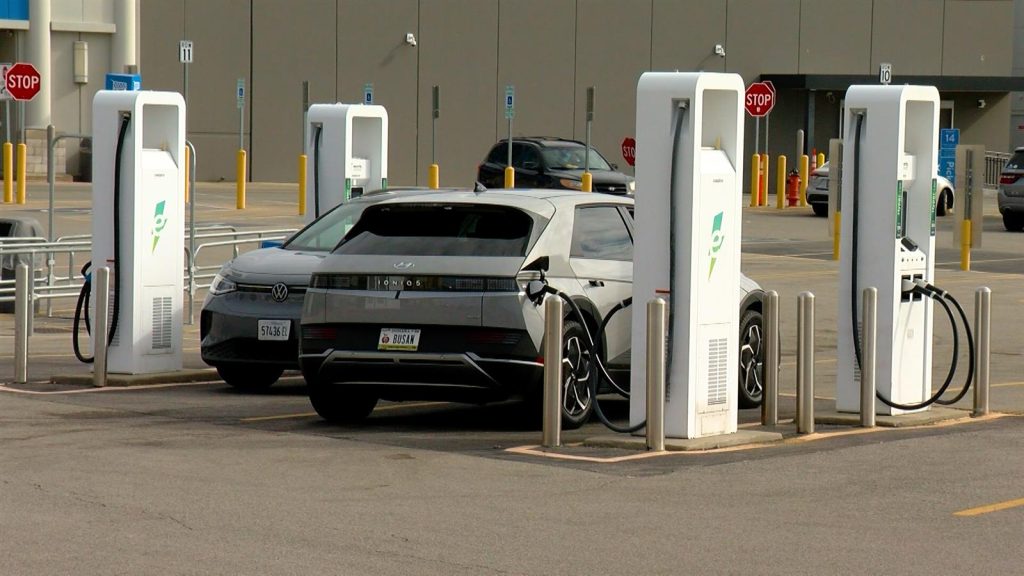
Workforce Training and Reskilling: Adapting to New Technologies
As the automotive industry shifts to electric vehicles, there is an increasing need for a workforce that is skilled in new technologies. To ensure that workers are not left behind, automakers and governments must invest in training and reskilling programs to help employees transition to new roles.
1. Reskilling Existing Workers
For many traditional automotive workers, reskilling is essential to adapting to the new landscape. Workers with experience in ICE manufacturing, engine assembly, or vehicle repair can be retrained to work on EV powertrains, battery systems, and electric vehicle maintenance. Many automakers are offering training programs and partnerships with technical schools to equip their workforce with the necessary skills.
For instance, Ford has launched a program aimed at reskilling its workers to transition from ICE vehicle production to EV manufacturing. General Motors and other automakers are also working with educational institutions to create certification programs in electric vehicle technology and related fields.
2. Education and New Skill Sets
As the automotive industry shifts toward electric vehicles, new roles are emerging that require expertise in software, data analytics, and battery technology. This has created a need for education programs that focus on these new skills. Workers in the automotive industry must adapt to the increasing digitalization of vehicles, with many EVs now equipped with advanced software, autonomous driving features, and connectivity.
New educational pathways, including university degrees in electric vehicle technology, software engineering, and data science, will play a key role in preparing the next generation of workers for the evolving industry.
The Global Impact of EV Adoption on Employment
The impact of electric vehicle adoption on the global workforce is not limited to developed economies. Many emerging economies, especially those that rely heavily on the automotive industry, face unique challenges and opportunities as they transition to electric vehicle production.
1. Job Creation in Emerging Economies
In countries like China and India, where automotive manufacturing has been a major economic driver, the shift to electric vehicles is expected to generate new jobs, particularly in the manufacturing of EVs and batteries. China, in particular, is a leader in EV adoption and production, and its government is heavily invested in creating jobs in the clean energy sector.
As more automakers set up EV production facilities in emerging economies, local economies will benefit from job creation in sectors such as manufacturing, research and development, and the creation of charging infrastructure.
2. Job Losses in Fossil Fuel Dependent Industries
However, the transition to electric vehicles may also have negative consequences for countries that are heavily dependent on fossil fuels. Nations that rely on oil extraction and refining for employment may experience job losses as the global demand for petroleum declines. To mitigate these effects, governments and companies must develop strategies for reskilling workers and diversifying economies.
Conclusion: Navigating the Future of Automotive Employment
The shift to electric vehicles is reshaping the automotive workforce in profound ways. While the transition creates new opportunities in EV manufacturing, battery production, and infrastructure development, it also leads to job displacement in traditional roles such as engine manufacturing, fuel distribution, and ICE vehicle maintenance.
To ensure a smooth transition, automakers, governments, and educational institutions must invest in workforce development, training, and reskilling programs to equip workers with the necessary skills to thrive in the electric vehicle era. By doing so, the automotive industry can minimize job losses while maximizing the potential for job creation and economic growth in the clean energy sector.
The rise of electric vehicles presents both challenges and opportunities for the jobs market. The future of the automotive workforce will depend on how well industries and governments can manage the transition and ensure that workers are equipped to meet the demands of a rapidly evolving market.



